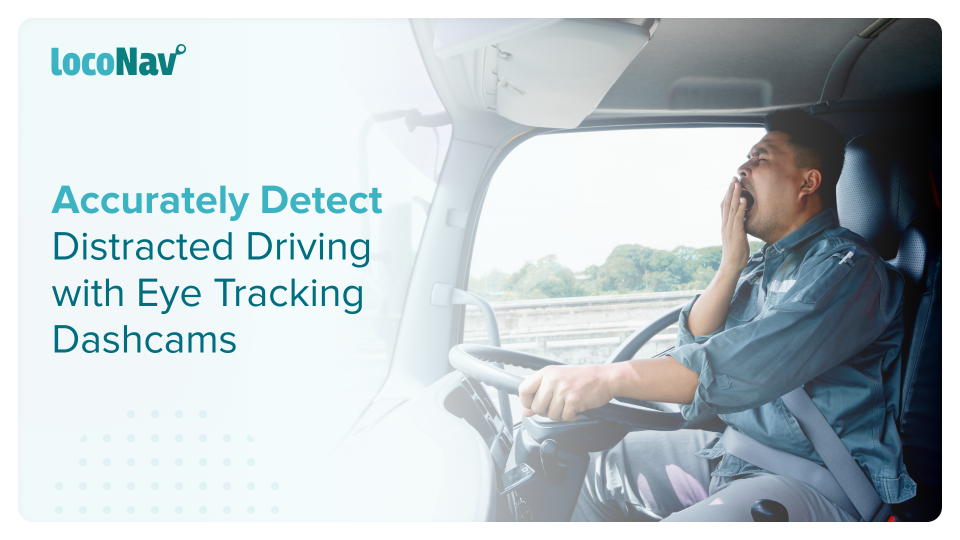

Dashcams for fleet management do so much more than just record video. While installing a dashcam system in your vehicle may appear to be an expensive investment at first, the long-term savings are well worth it.
Video is also being used by fleet operators to record drivers’ habits on the road. This may present mentoring opportunities if they are discovered driving while fatigued or distracted. Dashcams can assist drivers in anticipating risks and ensuring they have a clear view of all their blind spots. Dashcam technology can now provide drivers with in-cabin alerts about nearby traffic volume or incidents, as well as help them reroute to avoid dangerous situations, thanks to artificial intelligence.
Eye tracking dashcam is the latest development in video surveillance technology. In this blog, we will discuss how dashcams can track eye movements to identify distracted driving and how they can be used to promote fleet safety.
Advanced Video Telematics Solutions at Ridiculously Accessible Prices!
Types of Driver Physical Distractions Detected by a Dashcam
Dashcams can detect many forms of driving distractions. These include:
- Visual Distractions
The first and most common type of distraction is a visual distraction. This is when a driver’s eyes and focus are taken off the road. Things that can divert a driver’s attention and take his or her eyes off the road, even for a brief moment, include looking anywhere except the road, checking text messages, and more.
- Manual Distractions
When the driver takes away their hands from the steering wheel, they are engaging in manual distraction. This type of distraction can be combined with or without visual distractions. Drivers may take one or both hands off the steering wheel for a range of reasons, including eating, answering calls, smoking, and adjusting the music or temperature.
- Cognitive Distractions
Cognitive distracted driving is less visible because it occurs when the driver simply diverts their mind and focuses away from the act of driving and onto something else. Cognitive distraction can be caused by a variety of factors, including listening to an audio book, talking to a passenger, or daydreaming.
Cognitive distractions keep drivers from being in the right frame of mind while driving, which impairs reaction time and the ability to drive safely.
How Does an Eye Tracking Dashcam Functionality Work?
Eye tracking dashcam uses various technological processes to measure eye movements, positions, and points of gaze. Eye tracking, in other words, identifies and tracks a person’s visual focus in terms of location, objects, and duration.
Eye tracking dashcam technology is frequently mentioned in relation to:
- Blinking pattern measurement
- Identifying what a subject ignores or does not look at
- Evaluation of pupil reaction to visual and emotional stimuli
By tracking these things, fleet managers can identify:
- Drunk driving
- Sleepy driving
- When vision is away from the road
- Accident response time
What Insights Can a Fleet Manager Gather From Eye Tracking Dashcam Data?
Human behaviour, preferences, and decision-making are all impacted by eye movements. Our pupils dilate when we are intrigued by something or when we are experiencing an intense emotional response to what is in front of us. The AI eye tracking dashcam is a quick fix to the distracted driving epidemic. It employs Cloud-AI technology to identify unsafe driving behaviours and provides data to managers to assist them in making decisions to keep their fleets safe. The eye tracking dashcam can discern a wide range of common distractions, including:
- Using a Phone
- Smoking
- Eating or Drinking
- Face not visible
- Camera Obstruction
Final Thoughts
When the eye tracking dashcam detects any of the aforementioned events, it sends the video to the AI engine, which analyses the video and searches for distraction events, providing tags that help fleet managers determine the causes of distraction.
It will also notify the driver so that they can correct their behaviour. Everyone makes mistakes, and even if the problem is resolved, the fleet manager is not notified in real-time. If the problem persists, the driver is endangering others on the road, and the fleet manager will be alerted.
FAQ
What Is The Accuracy Of Eye Tracking Technology?
Manufacturers frequently claim an accuracy of 0.5°. However, even in controlled environments, offset from the actual gaze point is frequently found to be greater than 1°, particularly for remote eye trackers.
What Are The Limitations Of Eye Tracking Technology?
- Does not work for a small number of users who wear contact lenses or have long eyelashes.
- Takes some time to calibrate before it produces satisfactory results. As a result, only a few users avoid using it.
- Some users’ eye movements are often unintentional.
